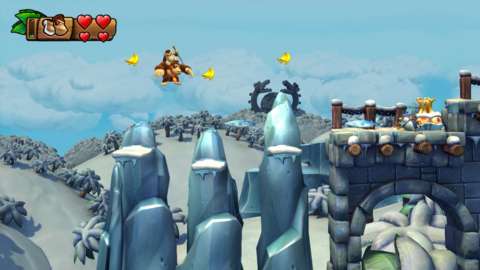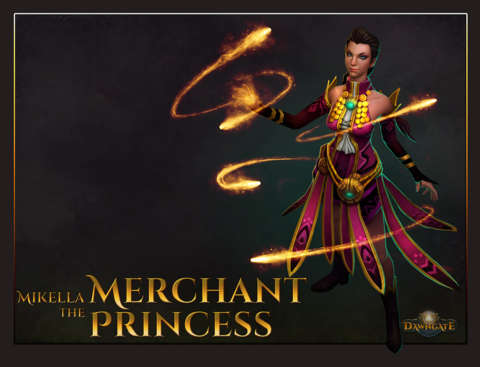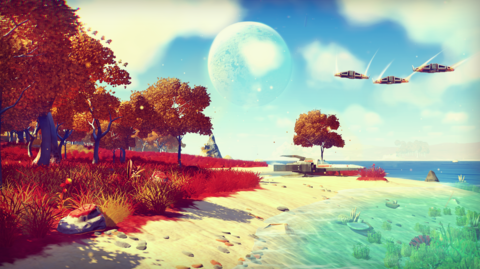Indie has become a term as nebulous as it is ubiquitous. Everyone has their own criteria for what warrants this designation, drawing arbitrary lines based on their own predilections. Maybe you're keen on indie games because you think their big-budget counterparts are soulless consumer products. Or the polish of the AAA scene has lured you away from the archaic independent games peddling cheap nostalgia. It's time we put these unfair categorizations to rest. There are characteristics that are endemic to everything indies hold dear and yet, when you pull back the curtain, you find so many exceptions that these designations become meaningless. Let's explore the many contradictions already present, and finally do away with our unnecessary labels.
Independence
Myth: An indie developer is independent. There aren't business executives breathing down their necks, marketing teams interfering with design, and shareholders clamoring for a profit. All of these capitalistic demands destroy the passion that fuels an indie developer.

Reality: Using the literal definition of "independence" seems like an easy way to separate developers, but it soon becomes clear that such a rule is fraught with problems. There are a bevy of high-profile studios who don't answer to a parent corporation. Epic has created quite a name for itself with its popular engines and beloved shooters, Ninja Theory was behind some of the most fascinating stories from last generation, and Platinum has breathed life into some of the greatest action games in history. Indie developers are not always completely free, either. The contract a studio must sign to be on Xbox One limits the platforms a game can appear on, which is as restrictive as it gets. We see developers who have independence and those that don't in every part of the industry, so there's no reason to assume indie teams are unchained.
Focus
Myth: A small scope is an indispensable part of being independent. Games that we usually call indie do just one or two things, but push those concepts as far as possible.

Reality: Indie games aren't the only ones who use a limited scope to their benefit. Nintendo is particularly good at this design mentality, though few would label the Japanese giant independent. Just take a look at Mario Kart 8. There is nothing to do in this game aside from motoring around colorful locales while whinging weapons at your friends. The same could be said for Donkey Kong Country: Tropical Freeze. You run, jump, and die; there's nothing else on that disc aside from platforming challenges. Contrast those experiences with games like Assassin's Creed and you can see the difference. There are so many systems and mechanics to balance that you might forget you're a time-traveling assassin. Still, there are plenty of AAA games pushing a few ideas as far as possible without worrying about elements that could distract from that core appeal.
Immediacy
Myth: Indie games don't waste your time like their more expensive competitors. There aren't tedious tutorials to sit through; just hit start and you're instantly having fun.

Reality: Too much hand-holding got you down? Fire up Dark Souls and you're thrust into a world of chaos before you understand how to swing a sword. Metroid similarity tosses you off the high dive before you know how to swim. And look no further then The Wonderful 101 and A Link Between Worlds for games that make sure you hit the ground running. Getting to the good part without any delay exists in every part of the industry, as long as you know where to look. And don't pick up any old indie experience expecting to jump right in, either. Have you tried Frozen Synapse? If you don't have an advanced degree in deadly espionage, you're not going to understand a lick of what's happening until you plow through a lengthy tutorial. Developers either embrace immediacy or implement teaching tools dependent on what the game needs, not whether they're considered indie.
Inventiveness
Myth: Indie games are all about innovation. It's here that you see real experiments, and only after an idea is proven to be amazing do you see bigger companies swoop in to commandeer it as their own.

Reality: It's a lot safer to add your own twist to an established experience than create one from scratch. Clones are rampant no matter where you cast your gaze, so don't assume indies offer a bastion of refreshment while AAAs are peddling yesterday's fudge sundae. The only difference between development trends is the kinds of games that are being created in their respective spaces. Roguelikes, apocalyptic survival games, and platformers are all the rage for indies, whereas bigger developers are churning out open-world madness, first-person shooters, and cinematic adventures. Oh, and don't forget MOBAs. Everyone who knows C++ is whipping up their own League of Legends killer. Designing something entirely new is incredibly rare, so we see usually small steps rather than full-blown revolutions. Whether we're talking about controlling time in Super Time Force or buying figurines to unlock characters in Skylanders, it's unexpected wrinkles that cause a stir, and that happens everywhere.
Style
Myth: If the indie scene is all about the steak, then AAAs make their money on sizzle. Smaller teams don't have the budget to dazzle with extraordinary visuals, so you're left with nothing but retro-inspired retreads.

Reality: Huge development teams don't have a monopoly on jaw-dropping graphics. Have you seen No Man's Sky? Not only does it look downright gorgeous, but it has dinosaurs, making it worthy of being displayed in any art museum. And it's not like it's the only beautiful game being created by a small team. The Witness has one of those enticing worlds in which I'd love to spend my vacation, if it wasn't filled with devious puzzles, and Abzu gives me shivers just watching the trailer; giant whales are terrifying. Although many games do employ old-school aesthetics, remember that style is as much of a choice as something that looks modern. That's part of the reason why you frequently see Blizzard dial back the technical demands of its visuals. Plus, ensuring everyone can play Diablo III means they have an even wider potential audience.
So why do we still continue to use indie to describe games? Because it's an easy shortcut. There needs to be a dividing wall between games that cost millions of dollars to produce and those that are designed part-time by a couple friends, right? Well, maybe not. The reason why we play games is to be engaged in some way. Whether we crave a thoughtful story, explosive action, or stressful strategy, we play games for their unique capacity to let us see and feel things that are completely absent from our normal lives. No matter the size of the budget or the development team, every game is just trying to keep us invested in some way, and should be compared against one another without contradictory categories. There's no use arguing what defines an indie game, or what constitutes a AAA team. All that matters is if it's any good.